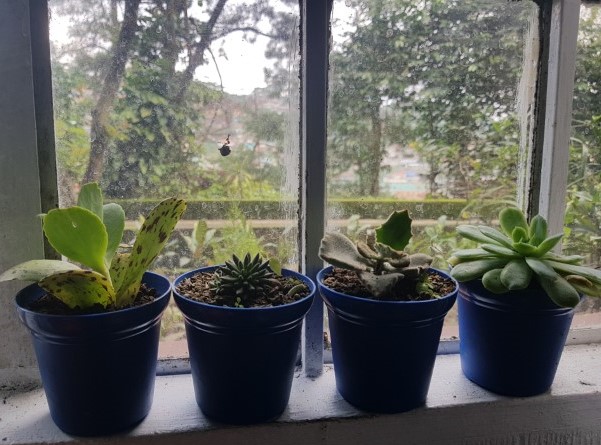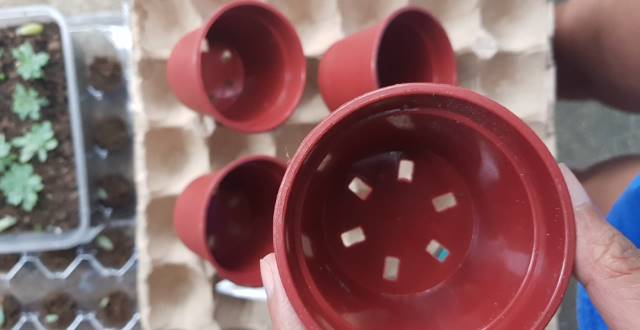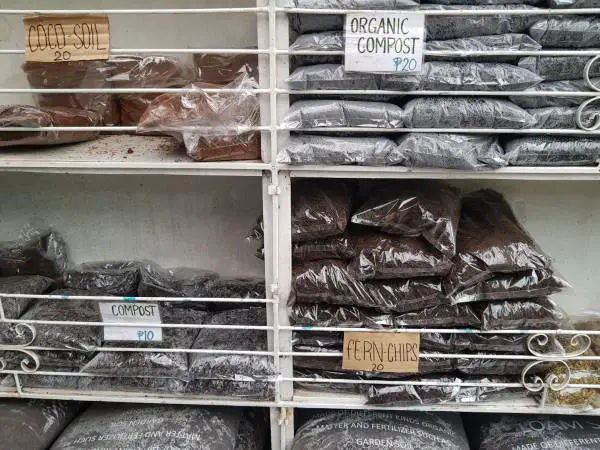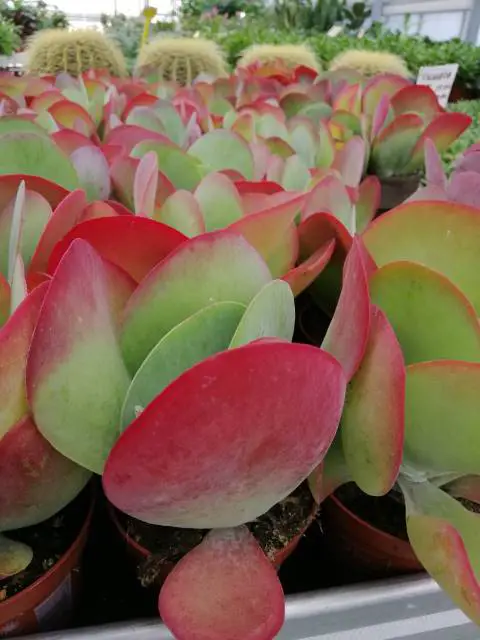Kalanchoe pinnata is a flowering succulent that belongs to the family Crassulaceae. The succulent is highly rewarding for its colorful and long-lasting blooms. Kalanchoe pinnata can be easily grown as an indoor succulent while it is more suitable as an outdoor succulent in warmer regions.
Common Names: Kalanchoe pinnata is known by several common names such as Air Plant, Cathedral Bells, Miracle Leaf, Goethe Plant, Life Plant, Mother in Law, Mexican Love Plant, Good Luck Leaf, Curtain Plant, Floppers.
Synonyms: Bryophyllum calycinum, Crassula pinnata, Cotyledon pinnata, Bryophyllum pinnatum.
Origin
Kalanchoe pinnata is originated from the Rocky Mountains of Madagascar.
Characteristics
Kalanchoe pinnata has erect stems that can grow up to 5 feet (1.2 m) tall. The stems are dark green, fleshy, hollow, with scalloped leaves that are red along the edges. It produces pendent, bell-shaped flowers that are reddish-purple, and appear in large spreading panicles with opposite stout branches.
Blooming season
The succulent blooms merrily by producing bell-shaped flowers in the spring season.
How to Grow and Care for Kalanchoe pinnata?
Kalanchoe pinnata does not require a lot of maintenance and can be easily taken care of. Keep reading till the end to know how to care for Kalanchoe pinnata.
Light requirement
Kalanchoe pinnata prefers to grow at bright sunny locations, particularly during the summer season. The succulents should not be exposed to intense direct sunlight during the hot summer season because it can cause sunscald or sun injury.

Keep the indoor plants near bright sunny windows for plenty of light exposure. Avoid direct contact with the windows when the summer is too hot. If your succulents appear leggy or stretched out it indicates that they are not getting sufficient light exposure. Move your succulents immediately under a source of light to resume their normal growth.
Watering
Kalanchoe pinnata needs moderate watering. Use the ‘Soak and Dry’ method to water your succulents. Give your plants a drink full of water and always let the soil dry between watering. The succulent should be watered only when the top 2 to 3 inches of the soil dry out completely.
These succulents do not like to be overwatered at all. Make sure you give your succulents the right amount of water at right time to avoid overwatering. Overwatering can cause the rotting of roots and encourages fungal growth.
Potting Soil
These succulents thrive best in a well-draining soil medium. You can use a standard succulent or cactus potting mix. If you do not want to use a readymade soil mix you can prepare your soil medium on your own by mixing 40 to 50% sand with clay and peat moss. Make sure the soil medium has good drainage. Avoid using a potting medium that is too clayey it will encourage water buildup in the soil. Use clay pots or glazed ceramic pots to grow your succulents because they have better drainage and work exceptionally well.
Temperature and Humidity
The succulent prefers to grow at a warm temperature. They are sensitive to extremely low temperatures. If the temperature drops below freezing it can cause freezing injury. If you are living in a cold region where temperature frequently drops below freezing, it is better to grow Kalanchoe pinnata indoors. The outdoor succulents in cold regions should be protected from freezing injury.
Kalanchoe pinnata does not have a specific requirement for humidity. It grows fine at room humidity.
Hardiness Zones
Kalanchoe pinnata can survive as a hardy succulent in the USDA hardiness zones 9a to 11b where the temperature is around -6.7 (20 °F).
Kalanchoe pinnata Propagation
The propagation process is fairly simple. It can be propagated using leaf and stem cuttings. Remove a healthy leaf or a part of the stem carefully from the mother plant. Set aside the cuttings at a warm dry place to develop callous for a day or two. Do not place the cutting directly in the soil as the cuttings will rot immediately.

Once the cuttings have developed callous, place them on a standard succulent potting mix and keep misting the cuttings regularly 5 to 6 times a day for the first few days.

Avoid exposure to bright direct sunlight. Once the cuttings are established in the soil and start rooting, resume normal watering and light regimes. Strictly avoid overwatering because it can cause rotting.
Repotting
As a general rule, Kalanchoe succulents should be repotted every 2 years. Repotting will provide your succulents with a fresh and fertile growth medium. The new potting soil will supply plenty of nutrients for the healthy growth of your succulents.
Fertilization
Though Kalanchoe succulents do not need fertilization and they get plenty of nutrients from the potting medium. But you can fertilize your succulents to give them an additional dose of nutrients, it will make them grow even healthier and lush. Fertilize your succulents fortnightly or monthly with a balanced dose of fertilizer. You can also use slow-release pellets to fertilize your succulents.
Pruning and Grooming
Kalanchoe pinnata does not require pruning and grooming frequently. However, it is recommended to remove dead leaves or spent blooms to encourage new and healthy growth in the next season. Pruning is a very simple process. Take a clean scissor or gardening shears and remove the unwanted plant parts carefully. Avoid damage to the healthy parts of the succulents. Make sure you use a sharp scissor or gardening shears for removing the plant parts.
Problems and Insect Pests
Kalanchoe pinnata can be attacked by aphids, mealybugs, scales, and mites. Generally, these insects do not create a serious problem if controlled at an early stage. To get rid of these creepy creatures rub the plant parts with 70% isopropyl alcohol. You can also use neem oil spray or a non-toxic insecticidal spray.
Another big problem of Kalanchoe pinnata is overwatering. The succulents can’t stand overwatering at all. Strictly avoid overwatering to save your succulent from rotting and dying.
Uses
Kalanchoe pinnata doesn’t require a lot of care so it can be a nice addition to home gardens. It can also be grown in succulent gardens particularly in warmer regions.
Featured photo Credit: Forest & Kim Starr, CC BY 3.0




